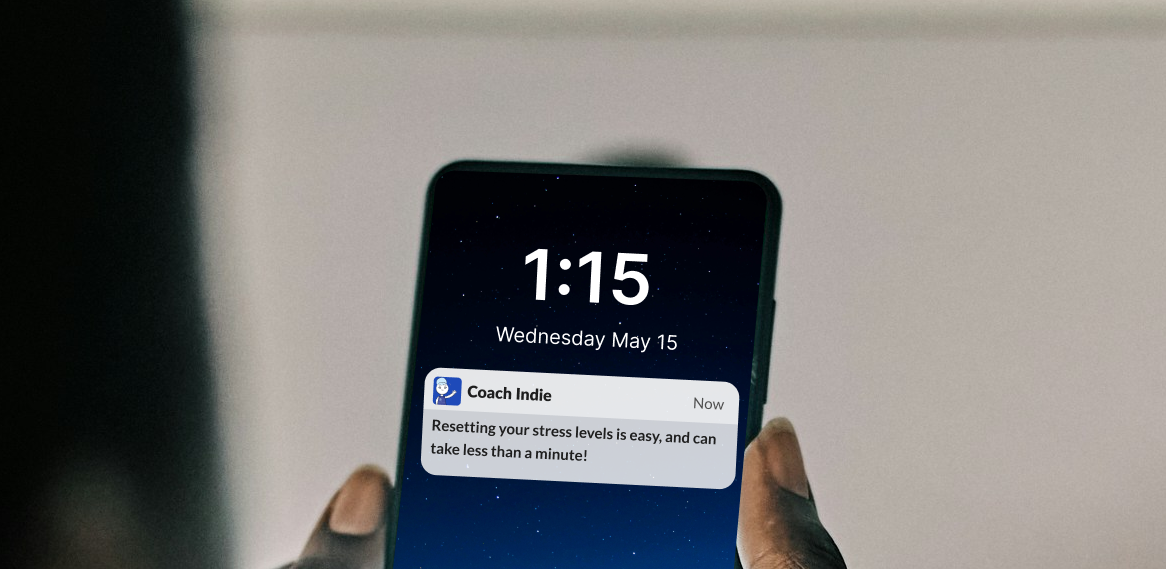Stress can be triggered by things both external to you as well as internal to you. The trick is learning how to respond to these in a positive way, as that will help prevent the build-up of chronic stress that leads to burnout and other issues.
External sources are typically tangible and can include work, money, family, time, cultural norms and expectations, experiences of discrimination and so on.
There are also less tangible, internal sources of stress: self-criticism, body image, identity, memories and the uncertainty of the future. In different ways and to different degrees, all of these things may be interpreted by your body as potential threats.
When you encounter one of these threats and are unable to frame it as an opportunity for learning and growth or connection, your fight-flight-freeze stress response is likely to be triggered (Crum, 2019).
Once triggered, your body only focuses on the task of survival. This sets off a neurological and physiological shift that changes your entire body and your mind in response to the perceived threat: epinephrine acts instantly to push blood into your muscles, glucocorticoids keep you going, and endorphins help you ignore how uncomfortable all of this is.
Your attention is alert and vigilant, focusing on short-term, here-and-now thinking; your senses are heightened; your memory shifts to channel its functioning to the narrow band of experience and knowledge most immediately relevant to this struggle.
Basically, any process not relevant to the task of survival is postponed. This goes back to our caveman days of having to be alert to avoid being attacked by a sabre tooth tiger! But these days, whilst the threat is different, the response is the same.
It's common to assume that once you have dealt with the source of your stress, your body and mind will return to a more normal state of functioning. But that’s not the case.
“If you’ve dealt with the stressors but haven’t dealt with the stress itself, your brain won’t let you rest.” – Emily & Amelia Nagoski
Researchers Emily and Amelia Nagoski in their book "Burnout: The Secret To Unlocking The Stress Cycle” suggest that in modern life often your fight-flight-freeze stress response cycle becomes stuck, due to lack of a clear signal the struggle has passed and you are safe.
As a result, your neurochemicals and hormones start to reduce but never shift into relaxation.
Emily and Amelia Nagoski note in their book that simply telling yourself “you’re safe now, calm down” doesn’t help.
If you’ve dealt with the stressors but haven’t dealt with the stress itself, your brain won’t let you rest. You have to do something that signals to your body you're safe. These can include:
-
Physical activity - literally any movement of your body is what tells your brain you have successfully survived the threat and now your body is a safe place to live.
Physical activity is the single most efficient strategy for completing the stress response cycle
- Breathing - a simple, practical exercise is to breathe in to a slow count of five, hold that breath for five, then exhale for a slow count of ten, and pause for another count of five. Do that three times—just one minute and fifteen seconds of breathing—and see how you feel.
- Positive social interaction - casual but friendly social interaction is the first external sign that the world is a safe place. Reassure your brain that the world is a safe, sane place, and not all people suck.
- Laughter - laughing together—and even just reminiscing about the times we’ve laughed together—increases relationship satisfaction.
- Affection – it doesn’t have to be physical affection, though physical affection is great; a warm hug, in a safe and trusting context, can do as much to help your body feel like it has escaped a threat. Animals have also been found to be an effective source of affection.
- A big cry - let your body release pent up emotions with a good cry.
- Creative expression - visual and performing arts of all kinds give us the chance to celebrate and move through big emotions.
So the next time you feel tense, tired, or all worn out, why not try one of these simple yet powerful actions?
We built Coach Indie to help remind people when to deal with early signs of stress, to help keep people healthy, safe and productive. Why not try Indie for yourself and your team today?






